Gossen Metrawatt AT32-DI Handleiding
Gossen Metrawatt
Meetapparatuur
AT32-DI
Bekijk gratis de handleiding van Gossen Metrawatt AT32-DI (2 pagina’s), behorend tot de categorie Meetapparatuur. Deze gids werd als nuttig beoordeeld door 38 mensen en kreeg gemiddeld 4.6 sterren uit 19.5 reviews. Heb je een vraag over Gossen Metrawatt AT32-DI of wil je andere gebruikers van dit product iets vragen? Stel een vraag
Pagina 1/2

AT32-DI
3-Phase 32 A Current Adapter with Residual Current Logging 3-349-353-03
8/4.21
Operating Instructions
1 Applications
Devices which are equipped with a 5-pole, AT32-DI 32 A / 6 h
CEE plug can be quickly and efficiently tested with the CEE
adapter. Connect the adapter to a test instrument which is
designed for testing portable devices, is equipped with an earth-
ing contact outlet for connecting the device under test and is
capable of directly measuring protective conductor current.
The following tests can be performed on devices with CEE plugs
with the help of the AT32-DI adapter:
• Testing of protective conductor continuity
• Insulation resistance measurement
• Protective conductor current measurement in the following
measuring modes:
– Direct (direct method via test socket)
– Differential (differential current measuring method)
– Alternative (equivalent leakage current measuring method)
Attention!
!
Application Restrictions
The CEE adapter AT32-DI may only be used for its in-
tended purpose and only with test instruments in accor-
dance with DIN VDE 0404 or IEC 61557-16.
Other use of the adapter, in particular for continuous
connection of 3-phase current devices to 3-phase elec-
trical systems, is not permissible under any circum-
stances!
In any case, maximum permissible conventional thermal
current is 30 A AC per phase.
2 Safety Features and Precautions
The CEE adapter is manufactured and tested in accordance with
safety regulations IEC 61010-1 / EN 61010-1 / VDE 0411-1.
When used for its intended purpose, safety of the operator, as
well as that of the instrument, is assured.
The instrument may only be connected to electrical systems (TN, TT or IT)
with a maximum of 240 V which complies with applicable safety regula-
tions (e.g. IEC 60346, VDE 0100) and is protected with a fuse or circuit
breaker with a maximum rating of 32 A.
Carefully read the operating instructions before use, in particular
the operating instructions included with the test instrument with
which you intend to use the adapter. Follow all instructions con-
tained therein.
The adapter may only be used for testing devices with 5-pin CEE plugs
and current consumption of no greater than 3 x 32 A (AC1).
The AT32-DI CEE adapter may not be used:
• With open housing
• If external damage is apparent
•
If the CEE outlet or the connector cable is damaged
• After excessive stress, i.e. if the load capacities specified in
the technical data have been exceeded
• After a long period of storage under unfavorable conditions
(e.g. humidity, dust or extreme temperature)
Measurement with line voltage:
Exposed parts may conduct dangerous touch voltage during
testing. Do not touch under any circumstances! Use a special
cover in order to avoid touch contact.
Under certain circumstances, full mains disconnection at the
device side may not occur in the event of leakage current, or it
may be inadequate to meet the requirements of a PRCD.
Work only at a protected workstation, i.e. use enhanced touch
protection, use a 30 mA RCD and wear personal safety equip-
ment (PSE).
3 Meanings of Symbols on the Instrument
Warning concerning a point of danger
(attention, observe documentation!)
CAT II Measuring category II device
CE Conformity Marking
This device may not be disposed of with the trash. Fur-
ther information regarding the WEEE mark can be
accessed on the Internet at www.gossenmetrawatt.com
by entering the search term “WEEE”.
4 Connecting the AT32-DI
Before testing can be started, the AT32-DI must be connected to
the test instrument and to mains power. Proceed as follows:
➭Connect the mains cable from the test instrument to the
earthing contact outlet labeled “Tester Outlet” included on the
AT32-DI.
➭Connect the earthing contact cable from the AT32-DI to the
test/mains outlet at the test instrument. The connection at the
AT32-DI is labeled “to test instrument test/mains outlet”.
➭Plug the CEE connector cable from the AT32-DI into a suitable
32 A / 6 h CEE outlet within your electrical installation. The
connection at the AT32-DI is labeled “Mains, 3~ 400 V, 32 A
50...60 Hz”. As of this point in time, the AT32-DI and the test
instrument are supplied with electrical power.
➭Finally, connect the device under test to the CEE outlet at the
AT32-DI. The outlet is labeled “To test/mains outlet for DUT
connection”.
Testing can now be started (see section 5).
5 Testing with the AT32-DI
You can now execute all tests which are otherwise possible with
the test instrument, and which are supported by the AT32-DI
adapter,
on devices with CEE plugs just as you would for devices with
earthing contact plugs. Proceed as described in the operating
instructions for the test instrument to this end.
!

AT32-DI
3-Phase 32 A Current Adapter with Residual Current Logging
© Gossen Metrawatt GmbH
Edited in Germany • Subject to change, errors excepted • PDF version available on the Internet
All trademarks, registered trademarks, logos, product names, and company names are the property of their respective owners.
Gossen Metrawatt GmbH
Südwestpark 15
90449 Nürnberg • Germany
Phone +49 911 8602-111
Fax +49 911 8602-777
E-Mail info@gossenmetrawatt.com
www.gossenmetrawatt.com
The following characteristics of the AT32-DI adapter must be
taken into consideration when performing tests with the test
instrument:
•
During insulation or equivalent leakage current testing, the three
phase terminals (L1, L2 and L3) and the neutral terminal (N) at the
DUT are short circuited.
• When testing protective conductor resistance, measured pro-
tective conductor resistance is increased by an amount which
results from the protective conductor system of the AT32-DI
CEE adapter itself.
If the adapter has not been used for a long period of time,
contact resistances in the internal relays may increase.
If this is the case, the relays should be activated several times.
Connect the adapter several times in succession to an earth-
ing contact outlet with a nominal voltage of 230 V to this end
(orange lamp on the AT32-DI lights up). In case of doubt, i.e. if
measurement results are close to the permissible limit value,
measure the adapter’s protective conductor resistance at the
PE terminal of its CEE outlet, and subtract the results from the
measured value obtained for the DUT-adapter system. (use
your test instrument’s zero balancing function to this end).
• In order to measure protective conductor resistance using the resid-
ual current method, set the measurement type selector switch to
I
(residual current). During 3-phase residual current measurement, the
resulting residual current is transmitted via the protective conductor
to the test instrument as protective conductor current, and recorded.
• In order to measure protective conductor current directly, set
the measurement type selector switch to I
direct.
Note
Protective conductor current can only be detected by test
instruments which offer direct leakage current measure-
ment as a measuring method. The operating instructions
for the test instrument must be observed in this regard.
• Before executing the leakage current measurement, or any
other tests for which the DUT is supplied with mains power
and must be placed into operation, it must be assured that
there are no short-circuits in the DUT between phase conduc-
tors L1, L2 and L3 and/or neutral conductor N! Nonob-
servance may result in damage to, or destruction of the
AT32-DI adapter, and possibly the device under test as well!
• Always start the test at the test instrument (orange lamp on
the AT32-DI lights up) before switching the device under test
on! In the case of extreme initial current at the DUT, nonob-
servance of this startup sequence may result in damage to, or
destruction of the AT32-DI adapter!
Attention!
!
Disabling of Protective Devices – Max. Current Consumption
As soon as the orange lamp at the AT32-DI lights up, the
terminals at the mains outlet from which power is sup-
plied are connected to the test/mains outlet at the AT32-
DI adapter without the use of a fuse or any other protec-
tive devices. Make sure that only devices designed for
use with 3-phase current with a maximum current con-
sumption of 3 x 32 A (AC1) are connected to this outlet.
Attention!
!
Testing the DUT for Short-Circuits
Short-circuiting of two or all three phases of the device
under test cannot be detected by the test instrument
until after residual current testing has been executed! In
such cases, the AT32-DI adapter may be severely dam-
aged as a result of current surges when this test is exe-
cuted!
Before connecting a device to the AT32-DI, make sure that
there are no short-circuits between the DUT’s phases by means
of appropriate testing, for example with a continuity tester!
Attention!
!
Connection of the DUT in Correct Phase Sequence
In particular after repairing 3-phase devices or connect-
ing new CEE plugs to such devices, make sure that the
phases are connected in the correct sequence.
Attention!
!
Test Sequence – Initial Current Problem – Starting the Test
Always start the test at the test instrument (orange lamp
on the AT32-DI lights up) before switching the device
under test on!
– Ending the test
Switch the DUT off first, and then stop testing at the test
instrument. In the case of extreme initial current at the
DUT or inductivity within the electrical circuit, nonob-
servance of this sequence may result in damage to, or
destruction of the AT32-DI adapter!
6 Characteristic Values
Electrical Safety
Protection class
I per DIN EN 61140/VDE 0140-1
Operating voltage 300 V
Test voltage 2.2 kV
Current-carrying
capacity 30 A continuous 3-phase current / 35 A
(AC1) brief operation, 15 min.
Intrinsic connected load
“Mains active” 7 VA, cos 0.5
Measuring category II
Pollution degree 2
EMC EN 61326-1
Residual Current
Measuring range 0.08 to 10.0 mA AC
Inherent error 4% rdg. 40 A
Operating uncertainty
6% rdg. 60 A
Mechanical Design
Protection Housing: IP 40, connections: IP 20
Dimensions W x H x D: 320 x 120 x 105 mm
(without cables and grommets)
Weight 2.75 kg
Product specificaties
| Merk: | Gossen Metrawatt |
| Categorie: | Meetapparatuur |
| Model: | AT32-DI |
Heb je hulp nodig?
Als je hulp nodig hebt met Gossen Metrawatt AT32-DI stel dan hieronder een vraag en andere gebruikers zullen je antwoorden
Handleiding Meetapparatuur Gossen Metrawatt

25 Maart 2025
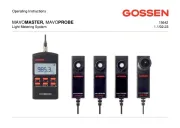
25 Maart 2025

25 Maart 2025
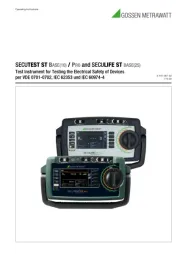
9 Maart 2025
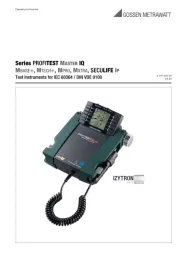
14 Februari 2025
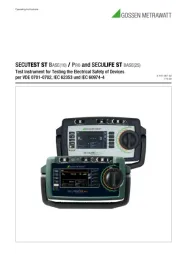
14 Februari 2025
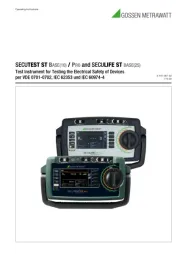
14 Februari 2025

4 Februari 2025

9 Januari 2025

29 Augustus 2024
Handleiding Meetapparatuur
- Aeroqual
- Aeros
- Truelife
- Uni-T
- Black And Decker
- Be Cool
- Digitus
- PeakTech
- Janitza
- Hager
- Alecto
- Aerospace Logic
- Kogan
- DriveTest
- Lascar Electronics
Nieuwste handleidingen voor Meetapparatuur
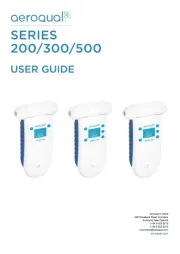
13 September 2025
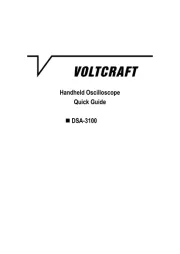
13 September 2025
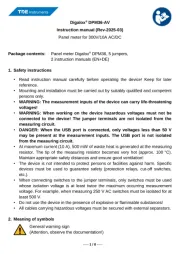
13 September 2025
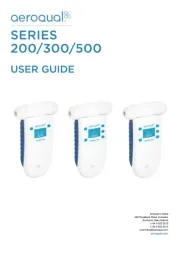
13 September 2025
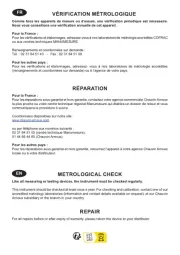
12 September 2025
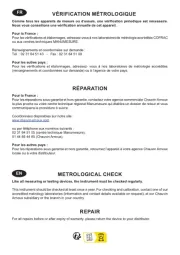
12 September 2025
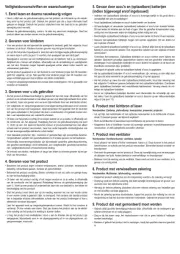
12 September 2025
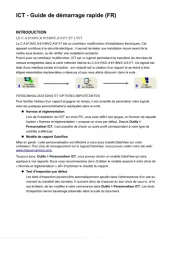
11 September 2025
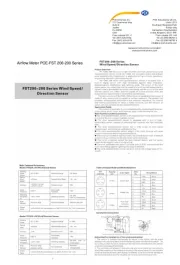
11 September 2025
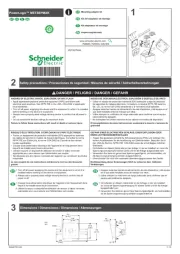
8 September 2025